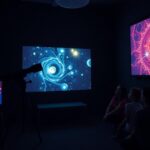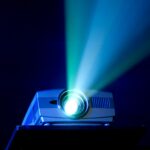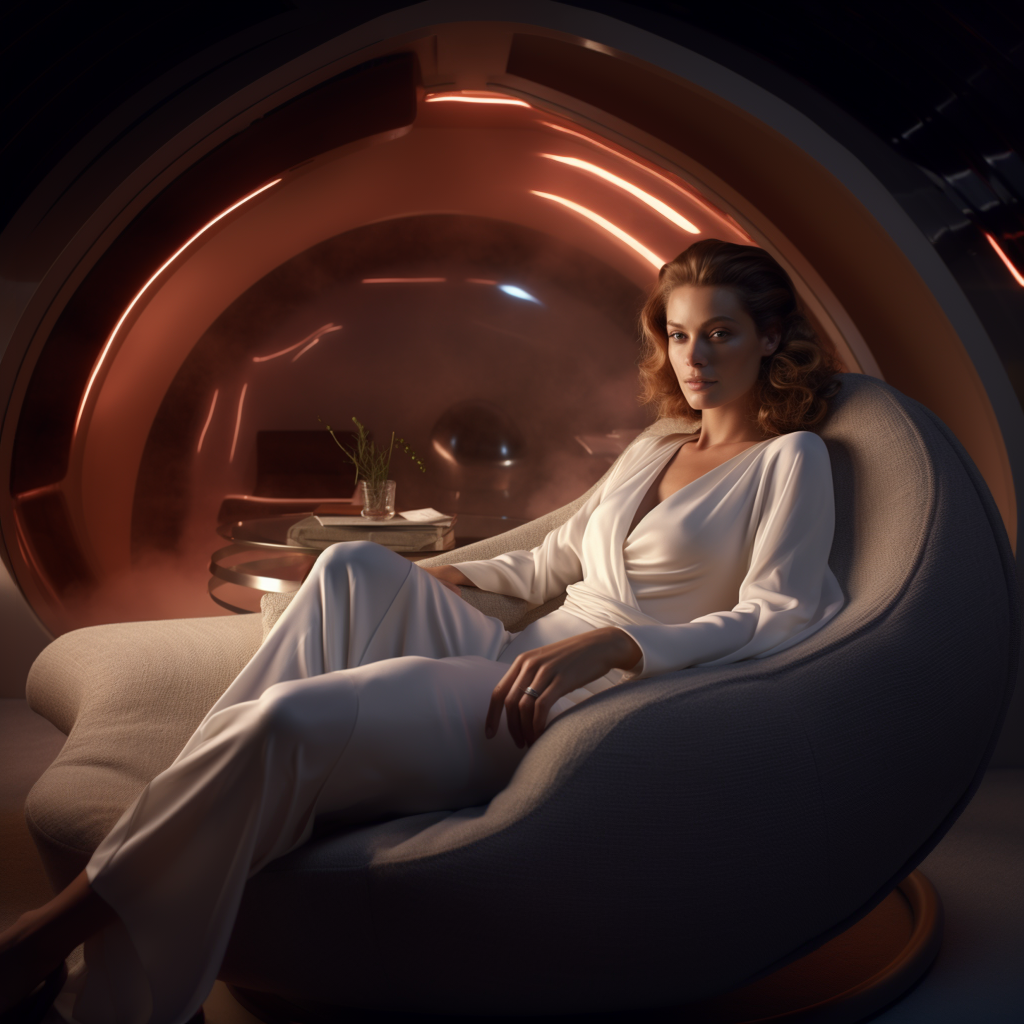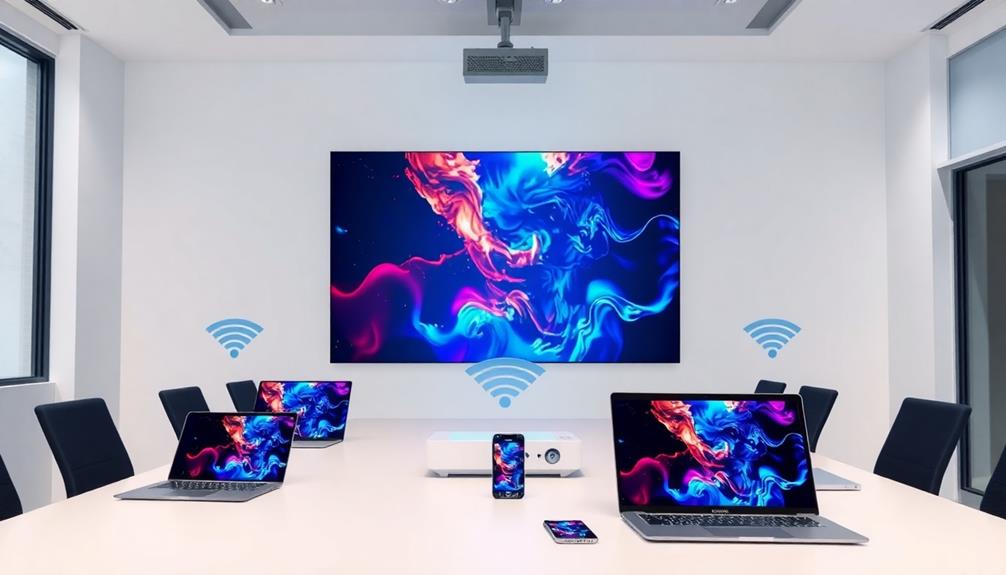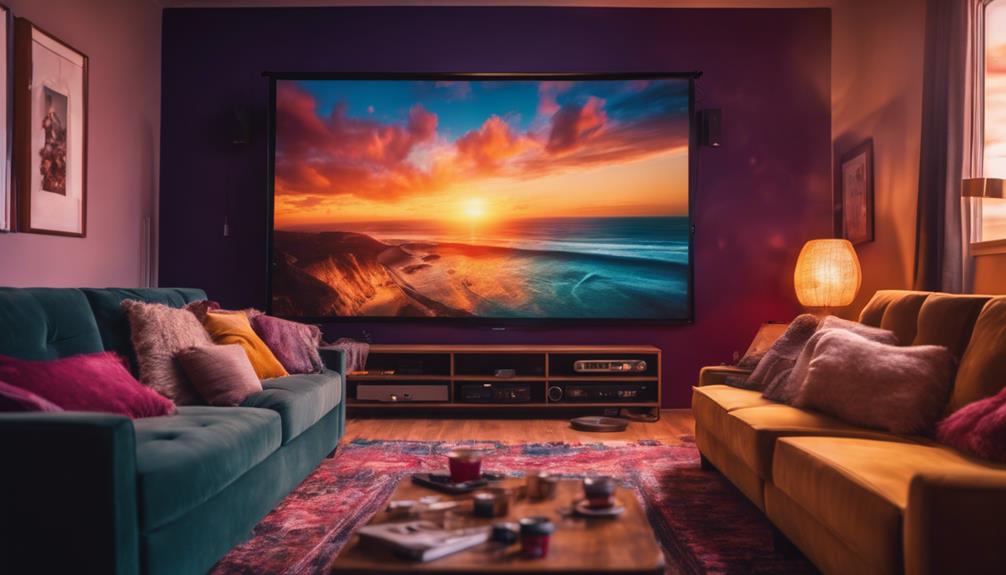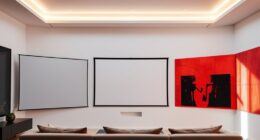When choosing between fixed and zoom projector lenses, think about your setup and needs. Fixed lenses provide a consistent focal length, making them perfect for permanent installations, delivering sharper images with minimal distortion. On the other hand, zoom lenses offer flexibility, allowing you to adjust image size without moving the projector, which is great for dynamic environments. However, zoom lenses can vary in brightness and sharpness depending on their settings. Understanding these differences helps you make an informed choice for your specific application. There's even more to explore on how lens options impact your overall projection experience.
Key Takeaways
- Fixed lenses provide sharper images with minimal distortion, ideal for static installations where projector position remains unchanged.
- Zoom lenses offer flexibility with adjustable focal lengths, making them suitable for dynamic environments where image size needs frequent adjustments.
- Brightness can vary significantly with zoom lenses, often dropping by over 30% depending on the zoom setting and lens design.
- Choosing between fixed and zoom lenses impacts overall presentation quality, with fixed lenses generally providing better sharpness and clarity.
- Consider application environment and compatibility with projector specifications when selecting a lens type to ensure optimal performance.
Understanding Projection Lenses

When choosing a projector lens, you'll encounter two main types: fixed (prime) lenses and zoom lenses. Fixed lenses have a single focal length, providing excellent optical sharpness and image quality. They're perfect for static setups where the projector's position won't change.
However, if you need flexibility, zoom lenses might be your best bet. With a zoom range that allows you to adjust the focal length, these lenses can adapt to different environments without physically moving the projector.
The throw ratio is also essential in your decision. It defines the distance from the lens to the screen compared to the screen width, helping you determine which lens fits your installation needs.
While fixed lenses generally outperform zoom lenses regarding clarity and performance, the latter's adaptability makes them ideal for dynamic environments.
Both lens types have quality factors like optical coatings and construction that influence brightness and clarity in projection systems.
Whether you opt for fixed lenses or zoom lenses, understanding these elements will help you make an informed choice tailored to your specific projection needs.
Fixed Lenses: Characteristics and Uses
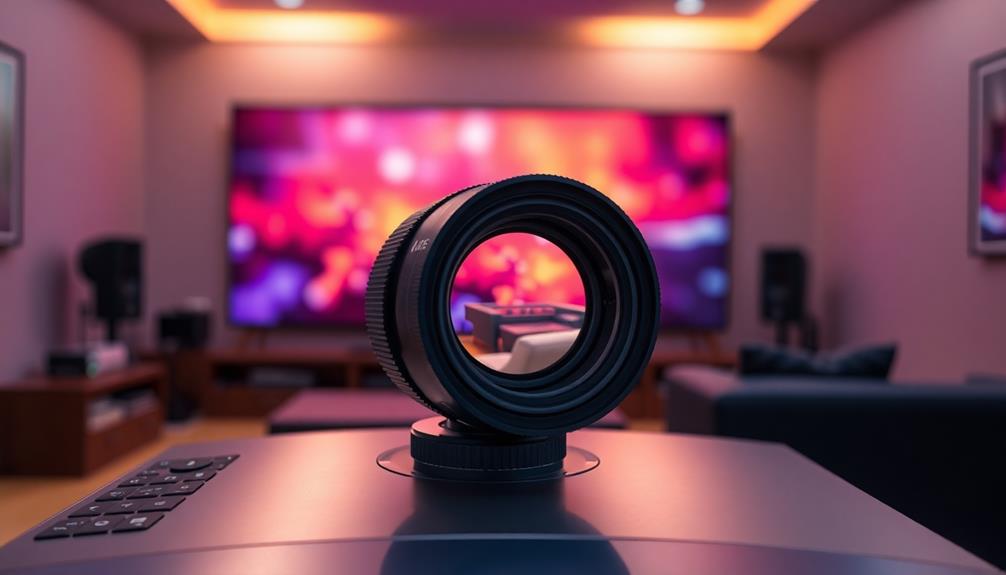
What makes fixed lenses a preferred choice for many projection setups? Fixed lenses offer a consistent focal length, which means you don't have to worry about adjusting the projector to change the image size. Their simpler optical design results in sharper images, enhancing your viewing experience. If you're setting up a permanent installation, fixed lenses are often ideal since they excel in environments where the projector's position remains unchanged.
Here's a quick comparison to illustrate their advantages:
| Characteristic | Fixed Lenses |
|---|---|
| Focal Length | Single, unchangeable |
| Image Size | Requires physical adjustment |
| Brightness Consistency | High, stable performance |
| Installation Complexity | Easier, lighter, less complex |
With fixed lenses, you typically enjoy better brightness consistency, avoiding the variability that sometimes comes with zoom lenses. Their performance in delivering high-quality images makes them a dependable choice for many users. If you're looking for a straightforward, effective solution for your projector needs, fixed lenses might just be the way to go!
Zoom Lenses: Flexibility and Advantages
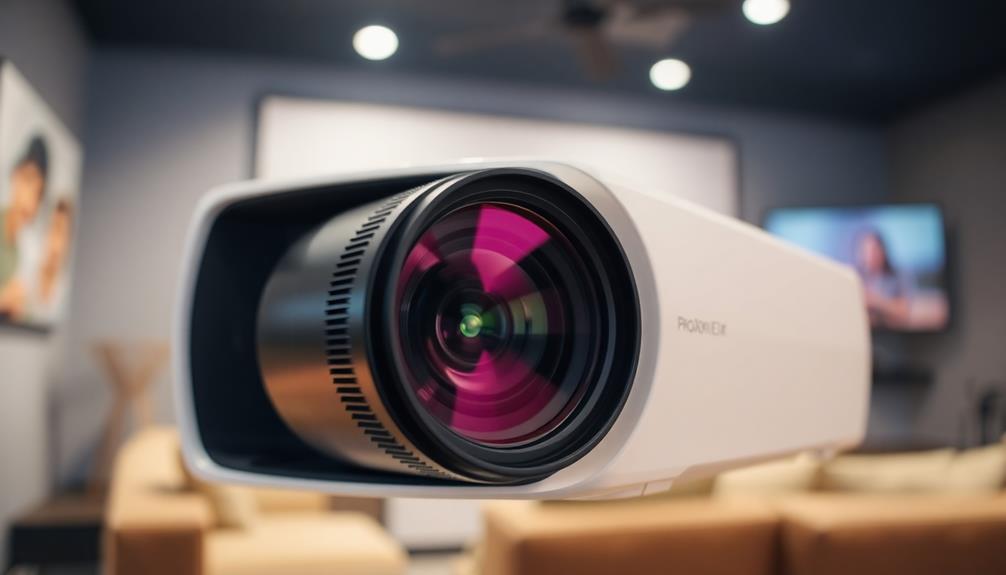
Zoom lenses offer exceptional flexibility, allowing you to adjust the focal length and change image size without moving the projector. This flexibility is vital for settings like classrooms and conference rooms, where adjusting to different image sizes can be essential. With typical zoom ratios ranging from 1.2x to 1.6x, you can easily optimize the image placement to suit your audience's needs.
Wide-angle zoom lenses are particularly advantageous, as they can produce higher brightness levels. By positioning the projector closer to the screen, you often get more lumens, ensuring your presentation stands out even in well-lit environments. This benefit, combined with the adjustable nature of zoom lenses, makes them ideal for scenarios where quick changes are necessary.
Additionally, the convenience of zoom lenses means you won't need multiple fixed lenses for various situations. This not only saves time but also enhances portability, allowing you to use the same projector across different locations without hassle.
Ultimately, zoom lenses provide the versatility and adaptability significant for any professional who frequently presents in diverse environments.
Comparison of Image Quality

Image quality is an essential factor to take into account when choosing a projector lens, as it directly impacts your audience's viewing experience. When comparing fixed focal length lenses and zoom lenses, the differences in optical performance are significant. Fixed lenses typically excel in sharpness and minimize distortion and aberrations due to their simpler construction. This makes them the go-to choice for professional work where image fidelity is critical.
On the other hand, zoom lenses offer versatility that can be advantageous in dynamic settings. However, their complexity can lead to reduced sharpness, especially at the extremes of their zoom range. While premium zoom lenses can approach the quality of fixed lenses, they often come at a higher price and may still lack the uniform focus that fixed lenses provide.
Here's a quick comparison of the two types of lenses:
| Lens Type | Image Quality | Ideal Use |
|---|---|---|
| Fixed Focal Length | Superior sharpness | Professional work |
| Zoom Lens | Variable sharpness | Dynamic environments |
| Premium Zoom Lens | High but not consistent | Mixed use |
| Non-Premium Zoom | Lower sharpness | Casual viewing |
Choosing the right lens can vastly enhance your presentations.
Impact of Zoom on Brightness
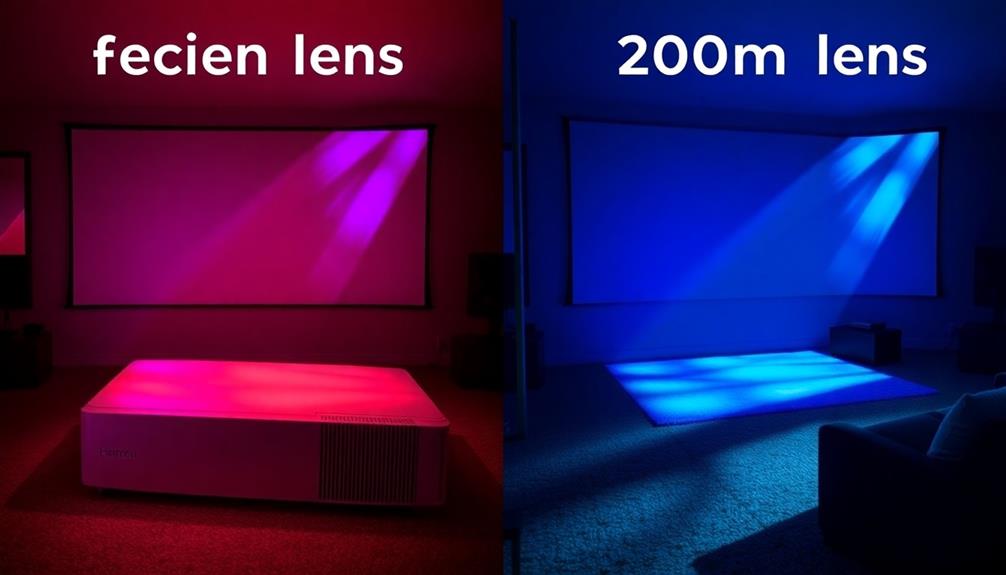
When you adjust the zoom on your projector, you might notice a significant shift in brightness, sometimes by over 30%.
The zoom ratio you choose can greatly affect how much light the projector outputs, which is essential for your viewing experience.
Understanding how brightness varies with different zoom settings will help you make informed decisions about your projector setup.
Brightness Variability Explained
Brightness variability in projectors can be considerably influenced by lens position and zoom settings. When using zoom lenses, you might notice that your projected image doesn't always maintain the same brightness. For example, a projector can produce over 30% variance in light output depending on the zoom ratio and lens design.
In wide-angle mode, projectors deliver higher lumens, especially when placed closer. If you're mounting a projector at 10.5 feet, expect more brightness than if it's at 21 feet.
Here are some things to reflect upon:
- A dimmer image can ruin your viewing experience.
- Compromised brightness consistency can lead to frustration during presentations.
- Missing vibrant colors and details can diminish the impact of your content.
DLP projectors typically have narrow zoom ranges, between 1.1:1 to 1.3:1, which can further affect brightness consistency across various settings.
Manufacturers often test brightness output at the midpoint of the zoom range, so if they misrepresent maximum lumens, you could end up with a disappointing projected image.
Understanding these factors will help you choose the right lens and optimize your projector for the best experience.
Zoom Ratio Effects
Understanding how zoom ratios affect projector performance is important for achieving the best viewing experience. When you adjust the zoom on your projector lens, you may notice significant changes in brightness. Typically, using zoom lenses can lead to a predictable decrease in light output.
For instance, switching from a longer focal length, like 75mm, to a shorter one, such as 50mm, can cause a dramatic 50% drop in brightness.
ANSI lumens ratings, which measure projector brightness, can fluctuate based on your zoom settings. Most manufacturers conduct brightness tests at the midpoint of the zoom range, potentially misrepresenting the maximum brightness capabilities of your projector.
It's essential to assess brightness at various zoom levels to get an accurate idea of performance. The design of a lens also plays a key role in brightness. A 2:1 zoom lens may exhibit variability in light output due to its optical configuration.
Consequently, when selecting a projector lens, consider how the zoom ratio will impact brightness to guarantee you achieve the best light output for your specific viewing environment.
Testing Brightness Methods
Although you might expect consistent brightness from your projector, the impact of zoom settings can lead to surprising fluctuations. When you adjust the focal length, you could see brightness drop by as much as 50%. Most manufacturers evaluate brightness at the midpoint of the zoom range, but that doesn't always reflect your actual experience.
Consider these factors when testing brightness:
- The type of lens can drastically change the light output.
- A lower f-stop number can mean brighter images, thanks to larger aperture sizes.
- Variability in brightness can exceed 30%, depending on lens design and placement.
Remember to check the ANSI lumens rating as it varies with the zoom ratio. This is vital for understanding how your projector will perform in different environments.
So, when you're evaluating your projector's suitability, consider how zoom settings influence brightness. The interplay between zoom, focal length, and light output affects the overall image quality you'll experience.
Applications of Each Lens Type

When choosing a projector lens, it's essential to take into account the specific applications of each type to confirm peak performance.
Fixed Lenses are ideal for static installations where the projector's position remains unchanged. They provide sharper images due to fewer optical elements and a consistent focal length.
On the other hand, Zoom Lenses excel in dynamic environments like classrooms or conference rooms, allowing you to adjust the image size without moving the projector, accommodating various screen sizes and distances.
For larger venues, you might consider Telephoto Zoom Lenses, which enable projection from significant distances while maintaining image clarity and detail.
If you're working in limited spaces, Short Focus Lenses are designed for home theaters or small rooms, allowing you to achieve excellent quality projections from close distances without sacrificing image quality.
Finally, if maximum image quality is vital, Prime Lenses are often utilized in professional settings, such as film production or photography, due to their superior optical performance compared to zoom lenses.
Understanding these applications confirms you select the right lens for your needs, optimizing your projection experience.
Choosing the Right Lens

Selecting the right projector lens is essential for achieving ideal image quality tailored to your specific needs. When you're choosing between fixed and zoom lenses, think about your application environment. Zoom lenses give you flexibility for varying projection distances, while fixed lenses excel in static setups with superior image quality.
Here are some key factors to evaluate:
- Your audience deserves the best viewing experience.
- A bright, clear image can transform any presentation.
- The right lens can elevate your event to the next level.
Evaluate the focal length and aperture size; these specifications greatly impact brightness and clarity. A lower f-stop number means a brighter image.
Additionally, determine the throw ratio required for your setup—short throw lenses allow for close installations, while standard throw lenses offer versatility.
Make sure to assess compatibility with your projector specifications, ensuring that the chosen lens fits your projector's mount and optical requirements to maintain image quality.
If you have unique projection needs, don't hesitate to explore customization options like anamorphic lenses or reflective lenses to achieve the best results.
Frequently Asked Questions
What Is the Difference Between a Fixed Lens and a Zoom Lens?
When you're choosing between a fixed lens and a zoom lens, remember that fixed lenses have a single focal length, while zoom lenses offer variable lengths, allowing you to quickly adjust image size without moving the projector.
Should You Use Zoom on Projector?
When you think of a zoom lens, imagine a painter adjusting their canvas. You should use zoom on your projector if flexibility and adaptability suit your needs, especially in dynamic environments where precision matters most.
What Are the Disadvantages of a Zoom Lens?
When considering zoom lenses, you'll find potential downsides like reduced image quality, increased weight, and mechanical complexity. Also, brightness can drop considerably while zooming, which might affect your overall viewing experience.
How to Choose a Projector Lens?
When choosing a projector lens, consider that a 20% increase in image brightness can enhance viewer experience. Assess the focal length, throw ratio, lens quality, aperture size, and installation type to guarantee peak performance.
Conclusion
When choosing between fixed and zoom projector lenses, consider your specific needs. Did you know that over 60% of educators report improved engagement when using the right lens? That's a significant impact! Whether you opt for the precision of a fixed lens or the versatility of a zoom lens, selecting the right one can transform your presentations and captivate your audience. Make an informed decision to elevate your projection experience and truly connect with viewers.
Hi, I’m Dominique. I love movies and want everyone to have the best home cinema experience possible. That’s why I started 1home Theatre Projector. We help people build their home cinema system using the latest technology and news on laser tv and all-around home entertainment.
We’re a small team of movie buffs (and experts) who are passionate about giving our readers the best advice and information possible. So whether you’re just starting out or you’re looking to upgrade your home cinema system, we’ve got you covered!




